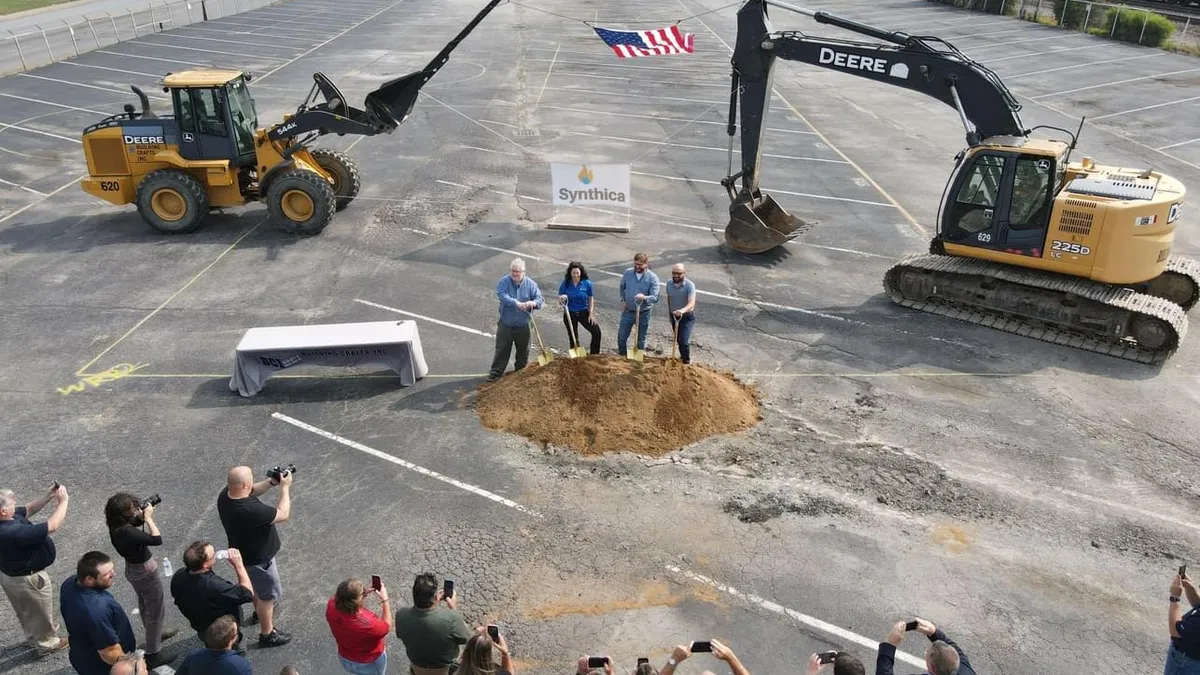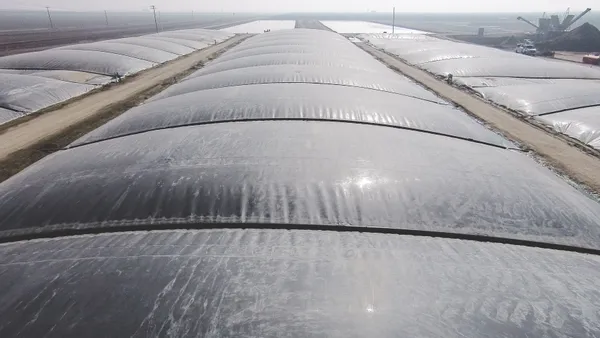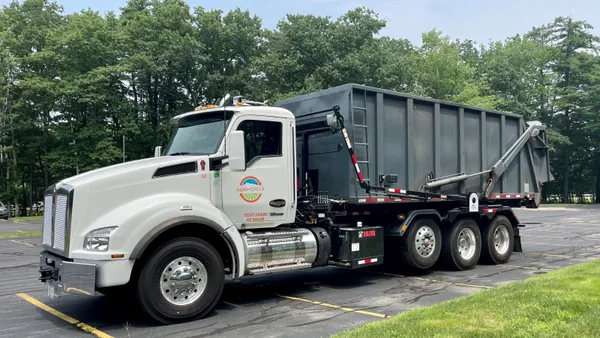Dive Brief:
- Anaerobic digestion company Synthica is planning five groundbreakings in Texas, Georgia, Kentucky and Louisiana next year following an equity investment from Goldman Sachs Asset Management. The company announced the large equity investment on August 7 without disclosing financial terms.
- Synthica’s model uses pre-consumer organic waste to produce RNG, which it plans to sell to utilities and other industrial users. Grant Gibson, co-founder and chief development officer, said the food and beverage industry and other manufacturers have large, consistent organic waste streams but are underserved by companies looking to capitalize on that waste.
- Synthica has targeted Texas for two groundbreakings in the first quarter of next year. Gibson said that is an ideal market due to its gas infrastructure and ease of interconnection.
Dive Insight:
The investment comes amid rising interest from the private market in processes to reuse organic waste and create renewable natural gas.
Last year, the largest private transaction affecting the food waste and reuse ecosystem was a BlackRock fund’s $700 million acquisition of Vanguard Renewables, which sites its facilities on farms and partners with corporate clients to receive feedstock. This year, Enbridge announced a $1 billion development agreement with Divert to build out anaerobic digestion facilities and compete with other rising companies in the space.
A Goldman Sachs executive compared its investment in Synthica to a similar deal it struck with Verdalia Energy in Europe to produce biomethane, expressing interest in taking waste “out of a one-way system.” In their release, the companies also said they expect rising interest in RNG businesses to continue fueling development and opportunity in the space.
“We believe this sustainable process can provide dual benefits, helping businesses and municipalities beneficially reuse their organic waste and supplying the country's utilities with RNG, critical for reducing their carbon footprints,” Cedric Lucas, a managing director in the infrastructure business within Goldman Sachs Asset Management, said in a statement.
Following the investment, Mark Weidman, former CEO of Wheelabrator Technologies, will serve as executive chairman. Gibson cofounded Synthica with now-CEO Sam Schutte in 2017 and broke ground on the company’s first ever facility in Ohio in July. Gibson has a background in commercial composting and said he first noticed that organic industrial byproducts had few destinations for reuse.
“There was a lot of demand even 10 years ago, and the demand has just grown,” Gibson said. Meanwhile, he notes that investors like Goldman Sachs have comparatively few options for investment if they want to get involved in the waste-to-RNG space, leading to an opportunity for brands like Synthica that can capitalize on the sector.
“There's a plethora of groups out there that are looking for a home for their money to invest in RNG, whether it's a platform, a company, whatever you want to call it, and I just think that there's not a lot of opportunities” for those investors, Gibson said.
Compared to a digester solely taking in dairy farm waste, Synthica’s facilities require more complex up-front engineering to account for the different kinds of feedstock they receive from contracted manufacturers, Gibson said. But he said that cost is made up for in the consistency of supply Synthica’s facilities will receive.
“You look at those waste streams that come out of food and beverage manufacturing, and other industrial-sized producers that have organic waste streams that typically high volume, consistent and little to no contamination. You have a very consistent feedstock stream,” Gibson said.
Looking ahead, Gibson said Goldman Sachs’ investment will allow the company to accelerate growth in states where Synthica can locate close to its feedstock generators. In addition to the groundbreakings planned for next year, Synthica also lists the New York City, Chicago, Philadelphia, St. Louis and Tampa, Florida, markets as potential destinations for future sites. It plans to begin commercial operation at its first Ohio plant by the end of 2024.











